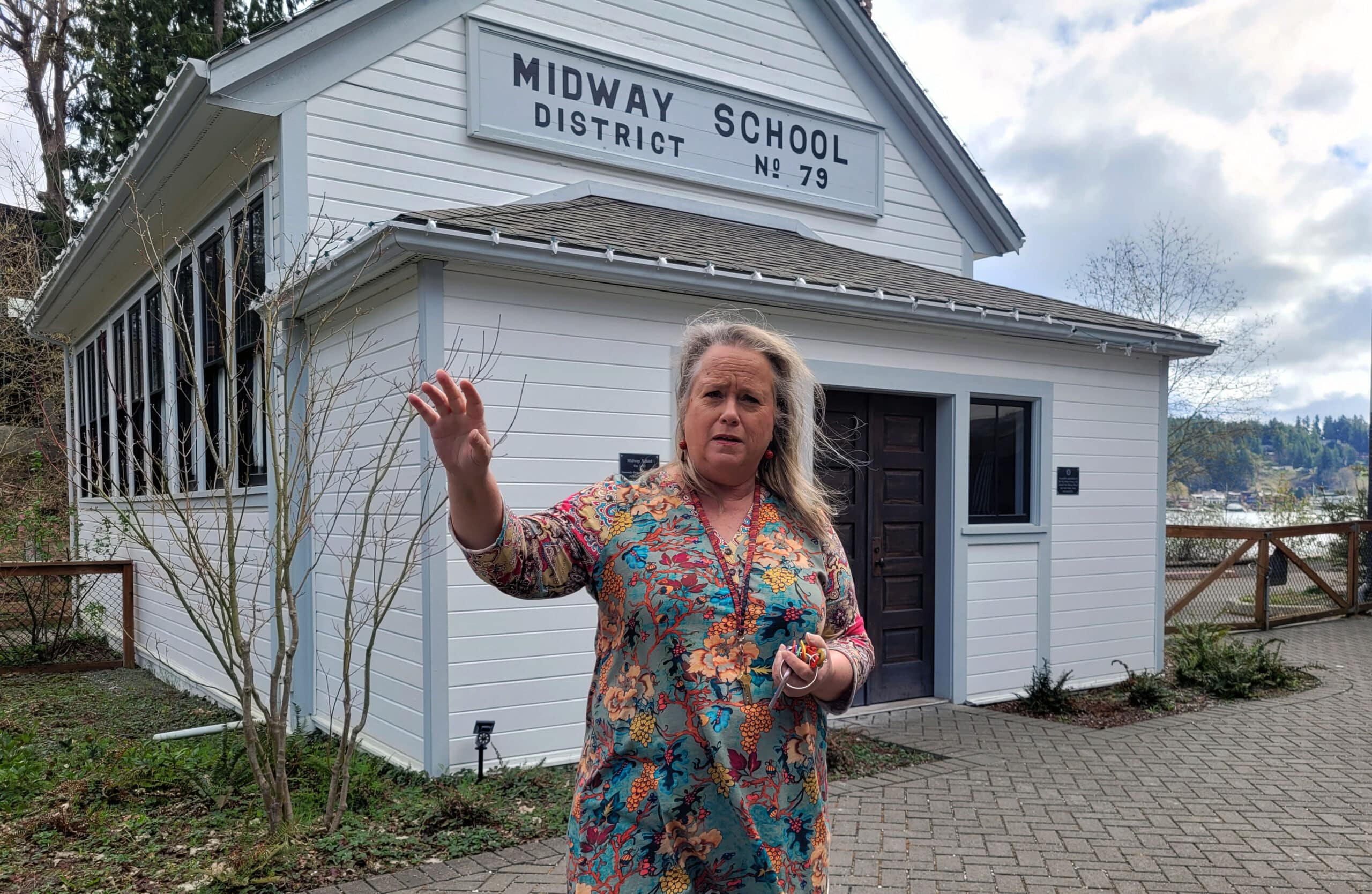Letters to the Editor
Letter to the Editor | How a Cultural Access program would benefit Gig Harbor
Edward Nadler’s recent letter brought up the potential Cultural Access tax, stating that “this tax supports the organizations that preserve our city’s charm, natural beauty, and historic heritage.” It seems a fitting time to explain Cultural Access in deeper detail.
Cultural Access is a fairly recent piece of legislation (RCW 36.160) that allows municipalities in Washington State to increase sales tax by one tenth of one percent to support the operations and educational programming for local cultural arts, heritage, and science-based non-profits. It will support both basic operations and school programs, including the ever-evasive field trip funding for local schools.

Harbor History Museum Executive Director Stephanie Lile on March 30, 2022.
I’ll be honest, to have this dedicated baseline funding for the Museum is literally a game changer. As a community-funded museum, each year we struggle to earn income and the loyalty of our donors to keep the facility running and open. At a time when changes in tax laws have reduced the donor base from a nationwide projection of 20% to 8%, alternative sources of community support are increasingly critical. Cultural Access is one of the only legislative options available for museums and cultural arts organizations in Washington State.
Cultural Access, and other programs like it (the first in the country being enacted in Denver in the mid-1980s), are one of the only sales tax programs that show a proven return on investment to the community. And this isn’t just in warm fuzzies, it’s in real statistics. The Americans for the Arts nationwide survey showed that communities who actively invest in arts, culture, heritage, and science organizations see less crime, more community pride and involvement, and positive impacts on housing values. Additionally, in a recent comparative report, our neighbors in Tacoma show that their Cultural Access program had an even greater affect, yielding 5 times the positive outcomes of the national survey.
A recent op-ed in the New York Times suggested that museums be considered part of our national infrastructure, citing the “Save our Stages” COVID funding program as a positive model. The trickle down did work in this case, and the Harbor History Museum did receive about $30,000 of SOS funding. But those funds are in the rearview mirror with few prospects on the horizon ahead. Cultural Access is the only similar option currently available in Washington State aside from the much-needed capital heritage preservation grant programs which do not support basic operations.
I’d suggest that we think of our museum as the fourth pillar of the community. The existing three— schools, parks, and libraries—all have dedicated tax funding. Why should cultural organizations be excluded from that infrastructure? After all, a four-legged stool is far more stable than a three-legged stool.
One of the possible hesitations is the perception that Cultural Access doesn’t directly fill the city’s general fund. I appreciate how serious that is because the museum and other non-profits face lack of general operating funds every day. But what Cultural Access does do is robustly support our local economy with a significant portion benefiting the city’s bottom line. Americans for the Arts APE6 study found that for every museum, heritage site, or science center visitor (and GH orgs have about 60,000 per year), an average of $29-$48 per visitor is being invested in our local economy. Look at the numbers from 2023, and that’s an average of $2,310,000 being reinvested in hotels, restaurants, shops, and services here in Gig Harbor, with city tax revenue being generated as a result.
Cultural Access is a way to provide a more stable foundation for the year-round anchor organizations, such as the Museum, Harbor WildWatch, and BoatShop, who help the city achieve its historic preservation, environmental, and cultural arts strategic plan goals.
Can the city council pass Cultural Access at any time? Technically, yes. The recent passage of HB 1575 gave local municipalities the right to pass Cultural Access by council vote. It can also go on the voter ballot and be passed with a simple majority vote.
If approved in Gig Harbor in 2024, we would be the first small municipality to enact the program. Tacoma was the first (Tacoma Creates), Olympia the second (Inspire Olympia), and now King County the third (Open Doors). As a community, we invest heavily in sports facilities, why not arts, culture, heritage and science facilities? Honestly, the comparative investment is modest—Cultural Access, if enacted, would generate just about $1 million per year (costing approximately $10-$20 per household per year) with a return to the community of more than double that amount.
Currently, city staff has placed Cultural Access on the 2024 Quarter 3 and 4 work plan. Meantime, many municipalities across the state are looking closely at how Cultural Access can support a critical reinvestment in their own communities.
As the findings of the AEP6 study conclude, “When communities invest in arts and culture, they are not doing so at the expense of community and economic development. Rather, they are investing in an industry that stimulates the economy, supports local jobs, and contributes to building healthy, vibrant, and livable communities.”
Stephanie Lile
Director/Curator Harbor History Museum
